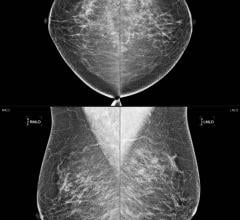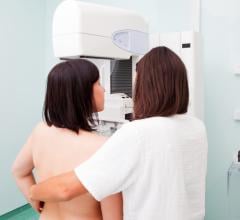
April 6, 2015 — Two new studies suggest women who experience hot flashes earlier in life appear to have poorer endothelial function — one of the earliest signs of cardiovascular disease— than those who have hot flashes later in life or not at all. Both studies were presented at the American College of Cardiology’s 64th Annual Scientific Session in San Diego.
“We tend to think of hot flashes as solely a quality of life issue, but these studies — based on data from two very different samples — call that into question,” said Rebecca C. Thurston, Ph.D., associate professor of psychiatry, psychology and epidemiology, University of Pittsburgh, and lead author of both studies. “Hot flashes appear to be more toxic in younger than older women.”
The research suggests early onset hot flashes may serve as a red flag to help identify women at greater cardiovascular risk who could benefit from more aggressive risk reduction early in midlife, Thurston said.
The studies — funded by the National Heart, Lung, and Blood Institute — add to emerging research linking hot flashes with cardiovascular risk, and endothelial dysfunction in particular.
In the first of the two studies, researchers enrolled 189 healthy peri- or post-menopausal women and examined the relationship between hot flashes and flow-mediated dilation, a marker of endothelial function that tests how well the vessels dilate in response to sheer stress on the vessel wall. Unlike similar studies that have relied solely on women self-reporting hot flashes, women in this study wore a monitor for 24 hours to confirm and quantify hot flashes. Flow-mediated dilation was assessed through a noninvasive ultrasound of the brachial artery in the forearm, which Thurston said correlates well with responses in the coronary artery.
More hot flashes over a 24-hour period were associated with significantly lower flow-mediated dilation and, therefore, poorer endothelial function in younger women, defined in this study as age 52 and younger. Hot flashes were not related to the early indicator of heart disease in the older women. The findings remained significant even after controlling for age, race, previous hormone use, menopausal stage and body mass index.
It seems the number of hot flashes matters too. On average, women in the study had nine hot flashes in the 24-hour period in which they were monitored. Having any number of hot flashes at a younger age was related to a 3 percent reduction in flow-mediated dilation compared to the younger women with no symptoms, which Thurston said is clinically significant. In particular, flow-mediated dilation in younger women who had 10 or more hot flashes a day was reduced by almost half compared to younger women without hot flashes, indicating the more hot flashes these women had, the more evidence of endothelial dysfunction.
“Endothelial function is very important to vascular health, and it’s often the first thing to go in the atherosclerotic process, so it’s an early marker of cardiovascular risk,” Thurston said. The endothelium is a thin membrane that lines the inside of the heart and blood vessels. It helps regulate blood clotting, immune function, inflammation and new blood vessel formation. Poor endothelial function is known to play a role in the development of coronary artery disease and other diseases of the arteries.
The second study further validates the findings, but in older women who already had signs of heart disease and were not on hormone therapy. Researchers evaluated 104 post-menopausal women with an average age of 67 who were enrolled in the Women’s Ischemic Syndrome Evaluation study, which was designed to gain a better understanding of female-specific patterns of developing cardiovascular disease.
Hot flashes were assessed by questionnaire and women were grouped based on when they recall having hot flashes: never, early onset (age 42 or younger) or traditional onset (after age 42). Women who had early onset hot flashes had significantly lower flow-mediated dilation suggesting poorer endothelial function compared with women whose symptoms started later. This finding remained significant even after controlling for age, race, prior hormone use and obstructive coronary disease. There was no difference in flow-mediated dilation between women who never had hot flashes and those who first experienced them after age 42.
“Hot flashes occur at a time in a woman’s life when her risk for heart disease increases,” Thurston said. “Because current cardiovascular risk algorithms do not always predict clinical cardiovascular disease well for midlife women, gaining a better understanding of the role vasomotor symptoms might play on vascular health could help identify women most at risk.”
Previous studies have been mixed, although several have also linked hot flashes to lower flow-mediated dilation. Still, more research is needed to refine the precise age at which hot flashes seem to be most associated with worse endothelial dysfunction and to investigate whether the severity of hot flashes plays a role. Research is also needed to uncover the shared mechanisms that might be underlying hot flashes and endothelial function.
These studies are limited due to relatively small sample sizes and the use of a surrogate measure for early cardiovascular disease. Research to investigate the association of hot flashes with cardiovascular events and other subclinical markers is needed.
For more information: www.acc.org


 July 29, 2024
July 29, 2024 








